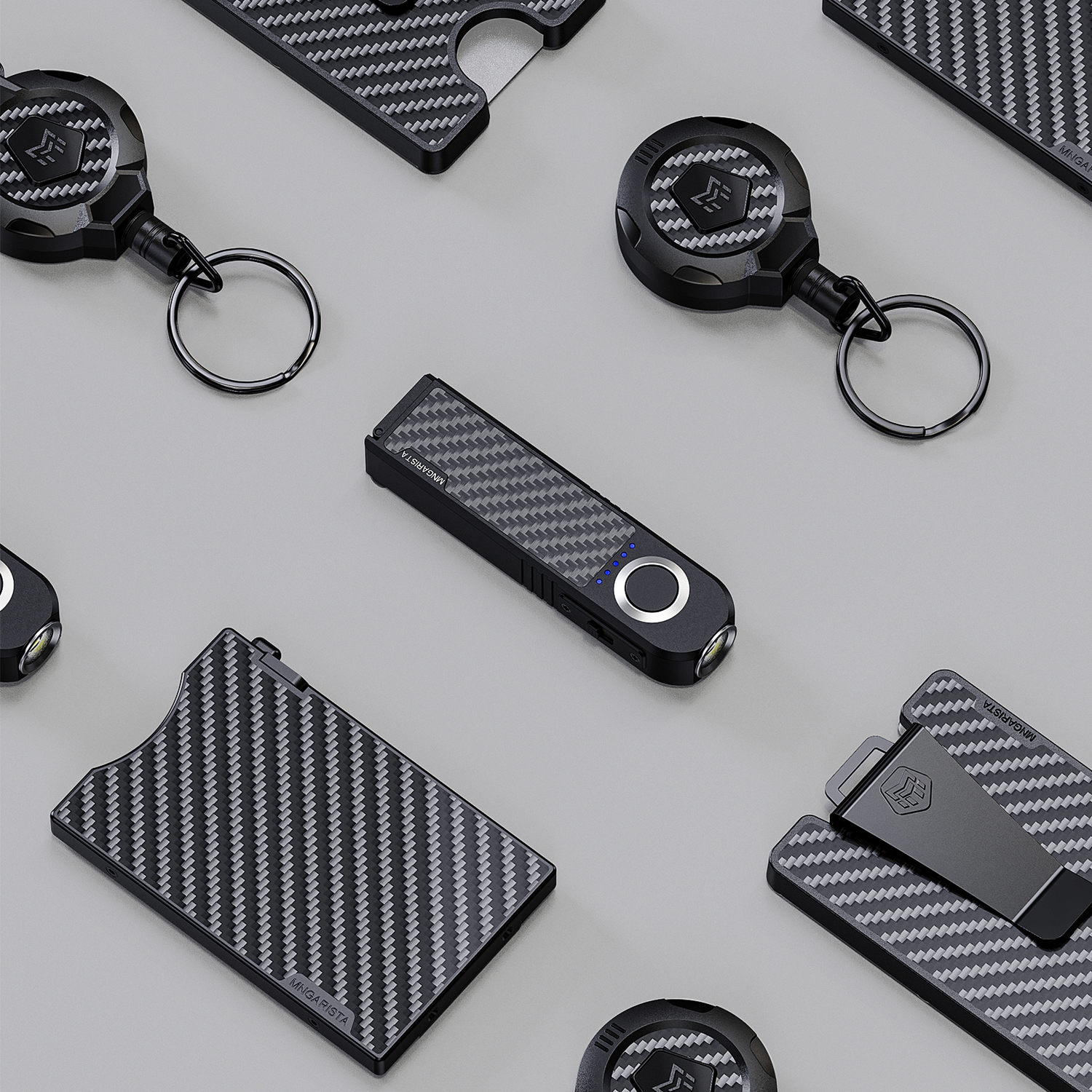Introduction to Carbon Fiber
Carbon fiber is a material made from ultra-fine carbon threads that are woven together to form a fabric. This fabric is then combined with a resin to create a composite material that is lightweight, extremely strong, and resistant to corrosion. Initially, carbon fiber found its application in aerospace, high-performance racing, and premium sports equipment. With advancements in technology and reductions in cost, carbon fiber has gradually made its way into the consumer market, becoming an ideal material for high-end products like carbon fiber wallets.
The unique woven structure of carbon fiber not only makes it durable but also gives it a distinct visual appeal, often displaying a glossy finish with a textured pattern. Additionally, carbon fiber boasts properties such as being waterproof, scratch-resistant, and shielding against electromagnetic interference, making it a perfect choice for electronic devices and everyday items.
Comparing Carbon Fiber Wallets to Traditional Wallets

1. Weight and Size
Traditional wallets, typically made from leather or canvas, while soft to the touch, tend to be heavier. Carbon fiber wallets stand out for their lightweight nature. A carbon fiber wallet is significantly lighter than a traditional wallet of the same capacity. Furthermore, due to the high strength of carbon fiber, these wallets can be designed to be thinner, thus reducing bulk and making them more convenient to carry.
2. Durability
Leather wallets, although classic, show signs of wear over time, such as fading, tearing, and cracking. In contrast, carbon fiber wallets are renowned for their exceptional durability and are resistant to damage, maintaining their new look for a long time. The scratch-resistant and waterproof properties of carbon fiber ensure that the wallet stays in excellent condition despite prolonged use.
3. Security
In today's world, information security is a growing concern, especially with the use of RFID technology in credit cards and IDs, which are susceptible to unauthorized scanning. Many carbon fiber wallets come with built-in RFID blocking layers that effectively prevent data theft, ensuring the security of personal information. Traditional wallets often lack this feature, providing less protection against such risks.
Frequently Asked Questions
1. Are Carbon Fiber Wallets Too Stiff and Uncomfortable?
While carbon fiber is inherently stiff, modern designs have addressed user comfort. Many carbon fiber wallets feature soft leather or fabric linings inside, ensuring a comfortable feel while maintaining a durable exterior.
2. Are Carbon Fiber Wallets Easily Scratched?
Carbon fiber is highly resistant to scratches, making it durable for everyday use. However, like any item, it is advisable to protect the wallet from sharp objects to prolong its lifespan.
3. How is the Capacity of a Carbon Fiber Wallet?
Carbon fiber wallets are often designed with functionality in mind. Despite their slim appearance, they are cleverly laid out to hold multiple cards, cash, and other small items. Some designs even feature pop-up mechanisms for quick access to cards, enhancing efficiency.
4. Are Carbon Fiber Wallets Expensive?
The production process of carbon fiber is complex, which can make these wallets more expensive than traditional ones. However, considering their superior durability and high performance, carbon fiber wallets offer excellent value for money, potentially saving costs in the long run by reducing the need for frequent replacements.
Conclusion
Carbon fiber wallets, with their lightweight, durability, and enhanced security features, have become the ideal choice for modern individuals seeking both style and functionality. Whether for everyday use or as a stylish gift, carbon fiber wallets exhibit a unique charm and practicality. We hope this article has provided you with a deeper understanding of the advantages and characteristics of carbon fiber wallets, helping you find the perfect wallet to suit your needs.


